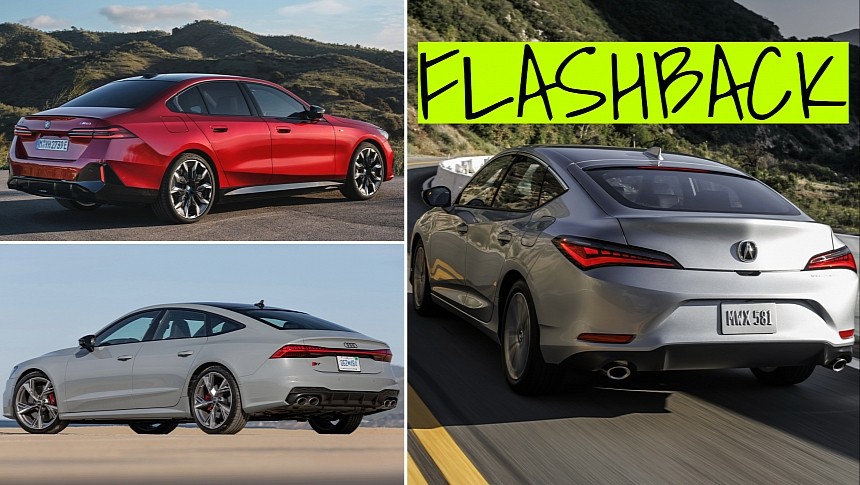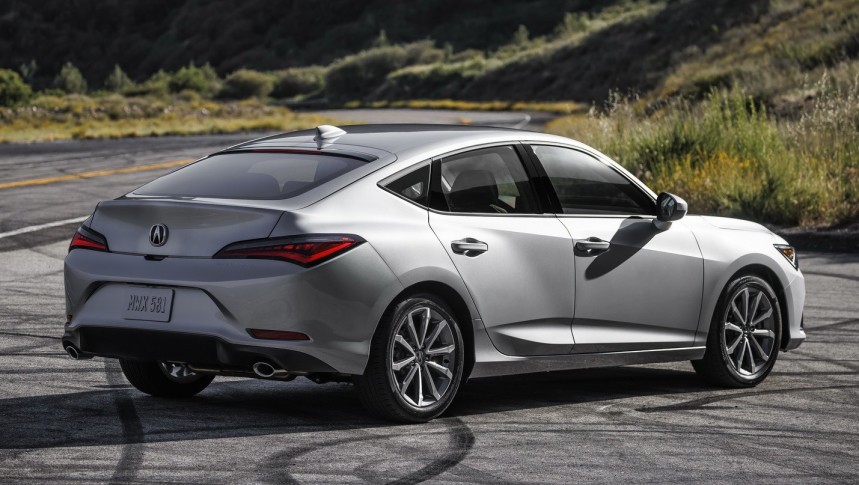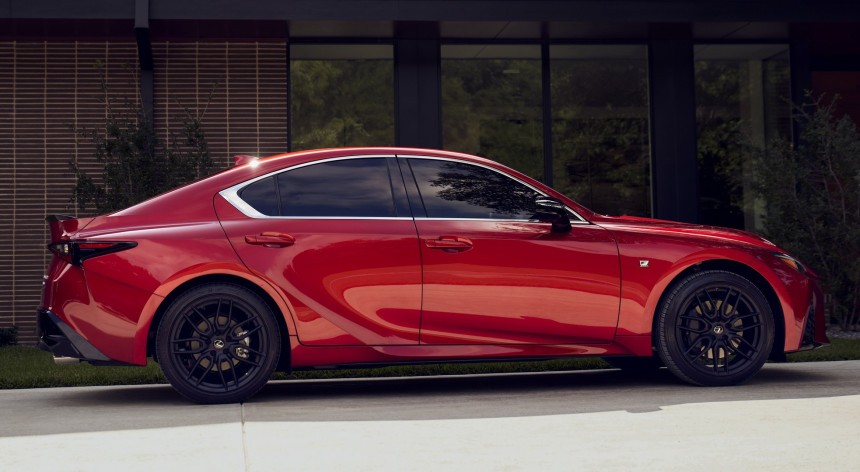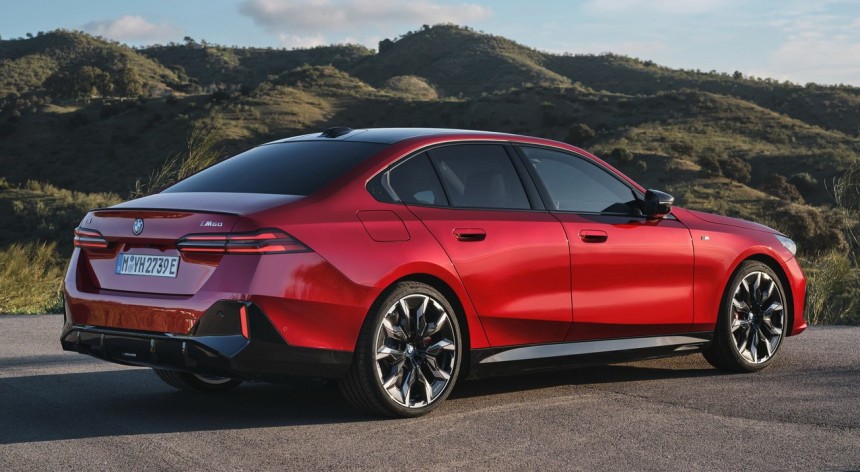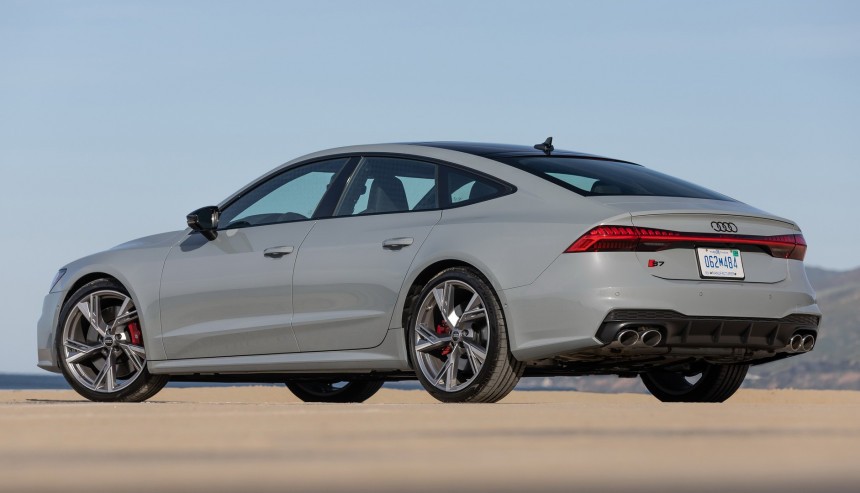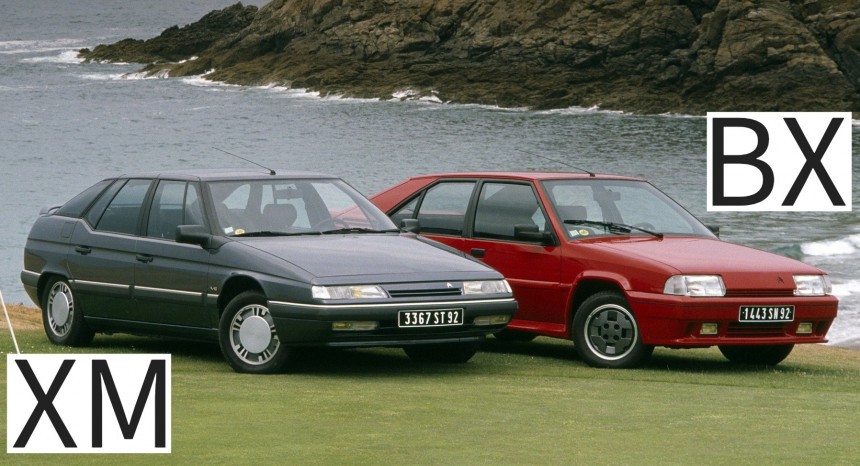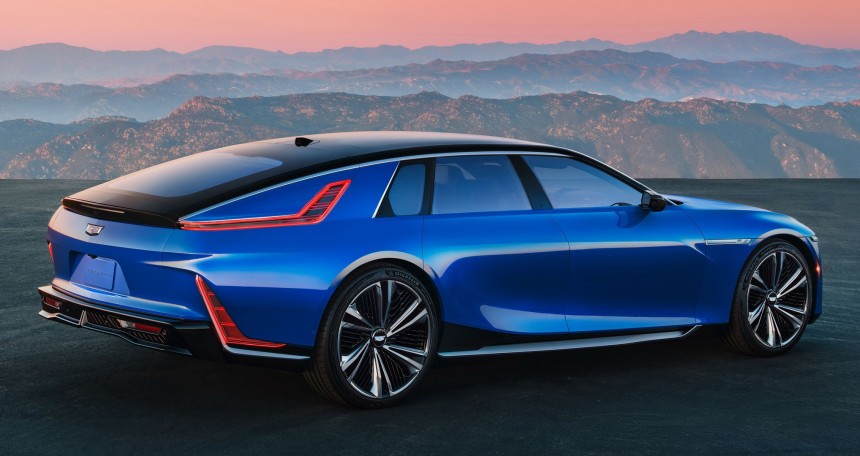Go back even a decade or so and you won’t find many people gutsy enough to predict the end of the four-door sedan era. Why would they? The Tesla Model S was still an unknown quantity, and crossovers had yet to begin their siege on the industry as a whole. Things are different now, and whenever I see a typical, notchback sedan, I feel as though I’m looking at the housing market before the 2008 collapse.
Look, you don’t have to be Michael Burry to see that the writing is already on the wall. Things are shifting away from the traditional three-box configuration, and part of it is because of the EV revolution, with carmakers looking into more efficient “packaging” when it comes to designs.
It’s not just that though. Car companies have literally gone bonkers trying to visually differentiate their EVs from their internal combustion engine models, resulting in weird, albeit futuristic-like designs for the most part.
It’s this type of exploratory attitude that will most likely seal the fate of the notchback sedan, because let’s face it, the horizontal trunk lid is rather pointless. I think it’s always been pointless, to be honest, it’s just that now we’re finally ready to address it as an industry. Before we dig any deeper into its demise, let’s look at some definitions.
Other characteristics include having two rows of seats, being front-engined, having a horizontal-ish roofline, and of course, four-doors. Until recently, as in this past decade or two, there was no confusing a 4-door sedan for anything else. There was also no confusion as to its terminology.
Nowadays, you have no choice but to break them down into categories, where you’ve still got your basic notchback sedans, your liftback sedans and finally your fastback sedans.
The Notchback sedan comes with a horizontal trunk lid. It’s the quintessential sedan. Liftbacks, however, might look like a regular sedan, but they have a hatchback-style tailgate with roof-mounted hinges – like a Tesla Model S, for example.
As for the fastback “sedan”, they were popular in the 1930s when cars didn’t really have horizontal trunks. Nowadays, they’re basically sloped-roof four-door cars, with either a horizontal trunk or a tailgate – like a Tesla Model 3, Porsche Taycan or even a Mercedes CLS. Personally, I only use the term ‘fastback’ to describe cars such as the Porsche Panamera or the Audi A7 Sportback, which technically are not conventional sedans.
You need to have a reasonably sized rear overhang when dealing with a typical three-box configuration, otherwise you’d have to either compromise trunk space or rear passenger room.
Then, towards the late 2000s, carmakers started to bring back fastbacks, and they started doing it in style. We’re talking about premium products such as the Audi A5 or the A7, and the Porsche Panamera. Suddenly, sloped rooflines on 4-door family cars were fashionable again, and brands such as Mercedes and BMW quickly got in on the action too.
Once that happened, I think certain things became inevitable, things such as shorter rear overhangs, sloping rooflines everywhere and notchback sedans making way for hatchbacks and fastbacks.
A 4-door fastback has a more balanced center of gravity than a 4-door sedan, given its shorter rear overhang. It's also more practical, easier to maneuver (arguably), allows for more dynamic styling, and has the benefit of looking more youthful.
Surely you’ve noticed that nearly all new or upcoming non-crossover four-door EVs are fastbacks or hatchbacks, or have some type of aggressive sloping roofline. And by nearly all, I really do mean the vast majority. Let’s just name a few: Tesla Model 3, Tesla Model S, Mercedes EQE, Mercedes EQS, Hyundai IONIQ 5, Polestar 2, Polestar 5, Audi e-tron GT, Porsche Taycan, BMW i4, BMW i5 (more on that one later), Kia EV6, Hyundai IONIQ 6, VW ID.7, and so on.
Heck, even the Genesis Electrified G80 and the Lucid Air have sloping rooflines. One of the few, and I mean few EVs that still looks like a traditional notchback is the BMW i7, but even there the trunk lid isn’t as “lengthy” as one would have expected from a flagship luxury sedan.
It’s just smart to eliminate as much of the rear overhang as possible, and I’m willing to bet this is one fashion trend that won’t be cyclical. Maybe it will take a few decades before every single notchback sedan is eradicated from this Earth, but it’ll happen, and the likes of Rolls-Royce and Bentley will probably be among the last carmakers to keep this body style going.
If you want a long or reasonably-sized rear overhang in a sedan right now, today, you need to go get a Dodge Charger or a Chrysler 300. Heck, they even gave the Honda Accord a sloping rear end design. That pretty much says it all.
That’s step no. 1 by the way. Get the public used to fastback-like body styles featuring horizontal trunk lids, before ditching the latter completely and going with a roof-mounted hinge design. We’re smack dab in the middle of this.
The second I learned about what they were going to do with the all-new 5 Series (this was way before the actual unveiling), I immediately knew that the traditional four-door sedan would be getting “kicked out of its home” even sooner than anticipated.
I thought we would at least be a couple of decades away from everyone figuring out the three-box configuration was obsolete. Now I fear that the timetable has been cut in half, to say the least. I would be genuinely shocked if anybody outside of Rolls-Royce put out a brand-new notchback sedan in the year 2033.
I think it wouldn’t be overstating things to say that Audi and BMW played major roles in popularizing sloped rooflines as far as four-door vehicles are concerned. Mercedes too, with the first-generation CLS, but to a lesser extent than BMW introducing a Coupe-style SUV in the X6 or Audi opening our eyes to the potential of the A5 Sportback and A7 Sportback.
There’s a reason why these body types cost more than their more “traditional” counterparts. They’re not just more stylish, but also more practical.
Let’s look at the Audi S6 and S7 Sportback, for example. The former is priced from $74,700, while the latter costs upwards of $84,500. They share identical powertrains, identical interiors, the same platform (VW MLB Evo), and the same wheelbase size. The A7/S7 is a bit more substantial in the overall width department, but the difference is negligible.
I just have to wonder, if Audi dropped the price on that S7 Sportback by $10,000, would anyone buy the S6 anymore?
Regardless, the German carmaker is way ahead of us, which is why the next-generation A6 will in fact be a fastback, rather than a traditional sedan. We know this not just thanks to the A6 e-tron concept, but also thanks to our spy photographers.
It was a time when French carmaker Citroen built some of its most innovative four-door sedans, except that none of them actually had a three-box configuration.
Citroen have long been credited for being way ahead of their time in the 80s and early 90s, and aside from boasting revolutionary technology, their models were also supremely practical, from the iconic CX, all the way to the BX, the XM and the Xantia.
Take the BX. It was available as a four-door family car with a hatchback-style rear end, but also as a station wagon. They had no use for a traditional sedan body style, and I mean that literally – what good could it have done? The XM, meanwhile, was a typical fastback, while the Xantia was more of a liftback. And of course, they all had roof-mounted tailgate hinges.
It was a completely different philosophy than what most European carmakers were embracing at that time. At least as far as four-door body styles were concerned. Other brands that also put out successful 4-door fastbacks during that era include Renault and Volkswagen, with the 25 and the Passat, respectively.
The moral of that story is this: If Citroen thought of doing it in the 1980s, then it was probably a good idea and worth exploring even today.
A fastback-style sedan, especially one with a genuine tailgate, could challenge small or even compact crossovers in terms of practicality. Maybe less so in certain markets/climates, but let’s not forget that most people don’t actually need higher ground clearance and all-wheel drive. They just don’t.
Well, I reckon it’s maybe one or two generations (tops) away from looking more like the EQS than anything that even remotely resembles a traditional notchback sedan.
As for how on Earth someone could make a “luxury fastback” instead of a sedan, just look at the Cadillac Celestiq. Seriously, take a really good look at it, because this type of vehicle is the future, like it or not.
GM realized that nobody really cares about what’s going on behind the rear passenger compartment of a luxury sedan. All they care about is the amount of space they get and all the tech available inside. The trunk area, if it’s big enough, could have a tailgate, a decklid, anything.
Let’s face it, the three-box design has run its course. It’s outdated and it belongs to the 20th century. In a few hundred years when we’re off to Fhloston Paradise at light speed for our vacation, the spaceship is sure as hell not going to be three-box-shaped. In the end, the design that maintains the most uniformity always wins, on every single level.
It’s not just that though. Car companies have literally gone bonkers trying to visually differentiate their EVs from their internal combustion engine models, resulting in weird, albeit futuristic-like designs for the most part.
It’s this type of exploratory attitude that will most likely seal the fate of the notchback sedan, because let’s face it, the horizontal trunk lid is rather pointless. I think it’s always been pointless, to be honest, it’s just that now we’re finally ready to address it as an industry. Before we dig any deeper into its demise, let’s look at some definitions.
Then vs. Now
According to the Oxford dictionary, a sedan is a car that features a “closed body and a closed trunk separated from the part in which the driver and passenger sit.”Other characteristics include having two rows of seats, being front-engined, having a horizontal-ish roofline, and of course, four-doors. Until recently, as in this past decade or two, there was no confusing a 4-door sedan for anything else. There was also no confusion as to its terminology.
Nowadays, you have no choice but to break them down into categories, where you’ve still got your basic notchback sedans, your liftback sedans and finally your fastback sedans.
The Notchback sedan comes with a horizontal trunk lid. It’s the quintessential sedan. Liftbacks, however, might look like a regular sedan, but they have a hatchback-style tailgate with roof-mounted hinges – like a Tesla Model S, for example.
As for the fastback “sedan”, they were popular in the 1930s when cars didn’t really have horizontal trunks. Nowadays, they’re basically sloped-roof four-door cars, with either a horizontal trunk or a tailgate – like a Tesla Model 3, Porsche Taycan or even a Mercedes CLS. Personally, I only use the term ‘fastback’ to describe cars such as the Porsche Panamera or the Audi A7 Sportback, which technically are not conventional sedans.
Point of no return
I genuinely believe that even if there wasn't an EV revolution, carmakers would have eventually figured out that there’s no point in having a long rear overhang, meaning the distance between the wheelbase at the rear of the vehicle and where the rear bumper ends.You need to have a reasonably sized rear overhang when dealing with a typical three-box configuration, otherwise you’d have to either compromise trunk space or rear passenger room.
Once that happened, I think certain things became inevitable, things such as shorter rear overhangs, sloping rooflines everywhere and notchback sedans making way for hatchbacks and fastbacks.
Benefits of a sedan-free society
You might be thinking that the sedan never really hurt anybody, and how it’s unfair that more and more new 4-door cars are coming out with alternatively-styled rear ends. You might even think it’s a trend and that it’s going to die off at some point. Here’s the thing... it most definitely won’t.A 4-door fastback has a more balanced center of gravity than a 4-door sedan, given its shorter rear overhang. It's also more practical, easier to maneuver (arguably), allows for more dynamic styling, and has the benefit of looking more youthful.
Surely you’ve noticed that nearly all new or upcoming non-crossover four-door EVs are fastbacks or hatchbacks, or have some type of aggressive sloping roofline. And by nearly all, I really do mean the vast majority. Let’s just name a few: Tesla Model 3, Tesla Model S, Mercedes EQE, Mercedes EQS, Hyundai IONIQ 5, Polestar 2, Polestar 5, Audi e-tron GT, Porsche Taycan, BMW i4, BMW i5 (more on that one later), Kia EV6, Hyundai IONIQ 6, VW ID.7, and so on.
It’s just smart to eliminate as much of the rear overhang as possible, and I’m willing to bet this is one fashion trend that won’t be cyclical. Maybe it will take a few decades before every single notchback sedan is eradicated from this Earth, but it’ll happen, and the likes of Rolls-Royce and Bentley will probably be among the last carmakers to keep this body style going.
What about internal combustion engine models?
What about them? Look at the Kia Stinger. Heck, look at the 2024 Lexus IS 500. The latter is a typical notchback sedan, but with a short rear overhang and a fastback like trunk lid design. Not enough examples? Alright, let’s try again: Acura Integra, Volkswagen Arteon, Genesis G70, the 2024 Toyota Crown for crying out loud!If you want a long or reasonably-sized rear overhang in a sedan right now, today, you need to go get a Dodge Charger or a Chrysler 300. Heck, they even gave the Honda Accord a sloping rear end design. That pretty much says it all.
That’s step no. 1 by the way. Get the public used to fastback-like body styles featuring horizontal trunk lids, before ditching the latter completely and going with a roof-mounted hinge design. We’re smack dab in the middle of this.
The 2024 BMW 5 Series
It’s one thing to do it to the Honda Accord, but to take the 5 Series, a freaking stalwart of the mid-size executive sedan segment, and shrink the rear overhang to the point where the car genuinely looks nothing like any 5 Series that came before? That takes guts, plus a perfect comprehension of where things are going.I thought we would at least be a couple of decades away from everyone figuring out the three-box configuration was obsolete. Now I fear that the timetable has been cut in half, to say the least. I would be genuinely shocked if anybody outside of Rolls-Royce put out a brand-new notchback sedan in the year 2033.
Who’s really responsible for this?
Let’s ignore EVs and all these new design languages that have been popping up, where nearly anything seems to go.I think it wouldn’t be overstating things to say that Audi and BMW played major roles in popularizing sloped rooflines as far as four-door vehicles are concerned. Mercedes too, with the first-generation CLS, but to a lesser extent than BMW introducing a Coupe-style SUV in the X6 or Audi opening our eyes to the potential of the A5 Sportback and A7 Sportback.
There’s a reason why these body types cost more than their more “traditional” counterparts. They’re not just more stylish, but also more practical.
I just have to wonder, if Audi dropped the price on that S7 Sportback by $10,000, would anyone buy the S6 anymore?
Regardless, the German carmaker is way ahead of us, which is why the next-generation A6 will in fact be a fastback, rather than a traditional sedan. We know this not just thanks to the A6 e-tron concept, but also thanks to our spy photographers.
You’ve heard of Citroen, right?
Let’s go back even further to a time when MTV was just getting started, the Soviet Union was collapsing, and Michael Jackson was quickly rising in the charts.It was a time when French carmaker Citroen built some of its most innovative four-door sedans, except that none of them actually had a three-box configuration.
Citroen have long been credited for being way ahead of their time in the 80s and early 90s, and aside from boasting revolutionary technology, their models were also supremely practical, from the iconic CX, all the way to the BX, the XM and the Xantia.
It was a completely different philosophy than what most European carmakers were embracing at that time. At least as far as four-door body styles were concerned. Other brands that also put out successful 4-door fastbacks during that era include Renault and Volkswagen, with the 25 and the Passat, respectively.
The moral of that story is this: If Citroen thought of doing it in the 1980s, then it was probably a good idea and worth exploring even today.
How this affects SUVs
This is quite a dilemma, because on one hand, if you’ve got a rich portfolio of crossovers and SUVs, you probably wouldn’t want to impact their sales by taking a chance on a “new”, more practical body style for whatever established sedan model you were already selling. Granted, the chances of that happening are slim, but they do exist.A fastback-style sedan, especially one with a genuine tailgate, could challenge small or even compact crossovers in terms of practicality. Maybe less so in certain markets/climates, but let’s not forget that most people don’t actually need higher ground clearance and all-wheel drive. They just don’t.
What about large luxury sedans?
They’re on their way out, it’s just a question of how soon. I’m talking about the Mercedes S-Class and its Maybach sibling, the Audi A8, and eventually even the BMW 7 Series. Let’s focus on the S-Class a bit, because you can’t even imagine Mercedes messing with that recipe any time soon, right?Well, I reckon it’s maybe one or two generations (tops) away from looking more like the EQS than anything that even remotely resembles a traditional notchback sedan.
GM realized that nobody really cares about what’s going on behind the rear passenger compartment of a luxury sedan. All they care about is the amount of space they get and all the tech available inside. The trunk area, if it’s big enough, could have a tailgate, a decklid, anything.
Let’s face it, the three-box design has run its course. It’s outdated and it belongs to the 20th century. In a few hundred years when we’re off to Fhloston Paradise at light speed for our vacation, the spaceship is sure as hell not going to be three-box-shaped. In the end, the design that maintains the most uniformity always wins, on every single level.
